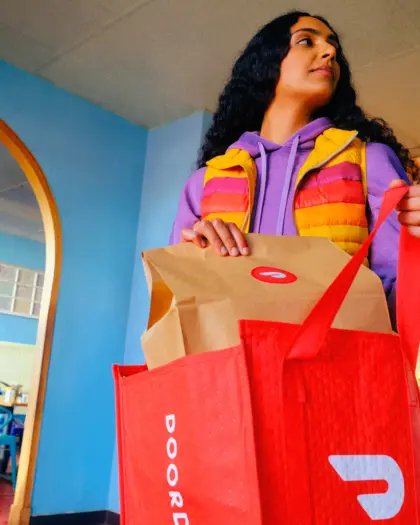Peloton grew by fusing hardware, software and media into a cultish consumer brand, then over‑extended during the pandemic, and is now engineering a comeback that looks very different from the first act: slimmer paid media, smarter channel mix (Amazon/Dick’s/Hilton/B2B), app‑first packaging, and male/strength audiences in focus.
Expect slower, more profitable growth powered by retention, partnerships and price/pack mix, not blanket discounts or single‑hero hardware. For wellness tech founders, the lesson is simple: build for resilience across audiences, formats, and channels, and instrument the model so CAC payback, churn and attach are the steering wheel, not impressions.
The origin story
Marketing as vertical integration (2012 to IPO)
From day one the company’s “marketing” was the product: a vertically integrated stack (hardware + OS + instructors + studios + delivery + showrooms) that created an experience “engaging‑to‑the‑point‑of‑addictive.” In Peloton’s 2019 S‑1, management tied usage directly to retention: average monthly workouts per connected subscriber rose from 7.5 to 8.4 to 11.5 (FY2017–19) with a 95% 12‑month retention across cohorts since FY2016 , and Bike NPS ran 80–93. That is a brand, not a banner ad.
The founding letter is also a marketing manifesto: solve the “boutique‑fitness‑at‑home” job, make instructors into stars, and control the end‑to‑end journey , from showrooms to in‑home delivery , so the experience itself does the acquisition.
- If you sell a habit, build the loop you want to advertise: content cadence to usage streaks to social proof (leaderboards/challenges) to referrals.
- Verticalise the volatile touchpoints (onboarding, delivery, setup) where bad experiences nuke advocacy.
The rocket ship phase (2019–2021)
TV‑heavy DTC plus celebrity‑instructor media flywheel
Peloton poured into TV and digital video to explain a new category, while instructors amassed followings larger than the brand’s owned channels , turning talent into an earned‑media engine. The S‑1 codified a playbook: data‑driven marketing + word‑of‑mouth referrals to predictable, increasingly efficient product sales.
Two brand shocks taught speed: the 2019 “Peloton Wife” ad controversy (stock down ~9–10% day‑over‑day), and the 2021 And Just Like That… “Mr Big” episode. Peloton (and Ryan Reynolds’ Maximum Effort) turned the latter into a same‑week response spot , a masterclass in rapid‑response creative ops
- Treat instructors/experts as an always‑on media network, not just class leaders.
- Build a “48‑hour creative SWAT team” process for culture shocks: pre‑approved spokespeople, legal/music clearances, and an edit bay on speed dial.
The stall and the reputational cliff (2021–2023)
Recalls and over‑stretch
Two recalls hit trust and cash: Tread+ (2021) and 2.2M Bikes for seat‑post repairs (May 2023). Peloton and the U.S. CPSC jointly messaged the bike remedy as a free self‑install seat‑post; Tread+ returned to market in December 2023 with a physical guard and “Safety Key” updates after a long absence. These moments forced a safety‑first narrative and a rethink of how aggressively to push performance media.
Commercially, the brand pivoted distribution: first‑ever wholesale on Amazon (Aug 2022) and in Dick’s Sporting Goods (Sept 2022), plus Hilton hotel placement and Delta in‑flight classes to seed trials on the road. These broaden top‑of‑funnel reach while de‑risking CAC
- When trust is dented, switch from reach to repair: fix + explain + over‑support (free remedies, proactive comms).
- Add B2B2C surfaces (retail, hospitality, payer perks) that give you zero‑CAC trials at scale.

The reset (2023–2025)
App‑first, fewer promos, more men, strength & breadth
App tiers. In May 2023, Peloton re‑launched with App Free, App One ($12.99) and App+ ($24), plus Peloton Gym (plan‑based strength). This decoupled growth from Bike ownership and priced in a BYO‑device world.
Distribution & partnerships. Alongside Amazon and Dick’s, Hilton put Bikes across ~5,400 U.S. hotels, while UnitedHealthcare expanded an offer making millions of members eligible for app access , a structural B2B2C funnel.
Hardware portfolio. Row (announced Sept 2022) and Guide (Apr 2022) diversified use‑cases and lifted strength credibility even if volumes remained modest.
Marketing mix & audience. By 2024–25, Peloton deliberately cut year‑round TV, reduced discounts, narrowed geography to the U.S., and targeted millennial men and strength. That re‑positioning , “less Bike, fewer promotions, more men” , came straight from the CMO brief, with refresh campaigns timed to peak retail moments rather than always‑on spend.
Cost discipline. Sales & marketing was pared back aggressively; one WSJ tally shows ad spend at $61M in a quarter (down from $113M YoY) and total S&M under $107M, emblematic of the profitability pivot. Leadership turnover accompanied the shift.
Leadership. In late 2024, Peloton named Peter Stern (ex‑Apple Services, Ford Integrated Services) as CEO effective Jan 1, 2025 , a services‑native operator signalling subscriptions over hardware heroism.
Latest operating picture (2025)
Through FY2025, Peloton repeatedly emphasised churn near ~1% monthly, improving losses and a mix shift toward subscription gross margin, even as connected subscriptions plateaued around the high‑2.7M range and guidance implied modest declines while the base is re‑engaged
What we kept for the Growthcurve playbook...
- Define your portfolio narrative (not a single product) and align media/merch to the most expandable behaviours (e.g., “strength anywhere”).
- If you must cut, protect the layers that defend churn: content cadence, community rituals, and product‑led notifications.
Peloton‑style unit economics
Quick definitions
- CAC = Sales & Marketing Spend / New Customers
- Payback (months) = CAC / Monthly Contribution Margin per Active
- LTV (simple) = ARPU × Gross Margin ÷ Monthly Churn
Assumptions for 2025 blended app‑first model (illustrative):
- Blended ARPU = $22/month (mix of App One at $12.99, App+ at $24, some All‑Access households; assumption).
- Gross margin on subscriptions = 70% (industry‑typical for digital content at scale; assumption).
- Monthly churn = 1.0% (aligned with reported recent levels).
- CAC = $130 per net new paid app subscriber via mixed channels (owned + Amazon + B2B; assumption informed by lower S&M).
Compute LTV (simple):
- LTV = $22 × 0.70 ÷ 0.010 = $1,540
(Step‑by‑step: $22 × 0.70 = $15.40 contribution per month; divide by 0.01 = 100 to $15.40 × 100 = $1,540)
Payback (months):
- Monthly contribution per active = $15.40 to Payback = $130 / $15.40 ≈ 8.4 months
With churn at ~1% and a $22 blended ARPU, Peloton‑style digital subs justify much lower paid media intensity than the pandemic era; partner “free trials” (Hilton/Delta/UHC) can drive CAC near zero. If churn rises to 1.5%, LTV drops to $1,027; if churn falls to 0.7%, LTV jumps to $2,200. The lever that matters is churn.
What we kept for the Growthcurve playbook...
- Make LTV math the meeting opener. Run every pricing, promo, and channel decision against payback < 9 months at current churn.
- Prioritise retention work (programmes, streaks, community) over paid reach once LTV/CAC > 8–10×.
What actually drove durable growth for Peloton (and what didn’t)
Worked
- Verticalised experience to advocacy: Instructor celebritisation + high‑production studios + frictionless delivery & setup produced retention and referrals.
- Channel expansion that lowers CAC: Amazon/Dick’s for visibility and convenience; Hilton for trial; UHC for paid‑by‑others access.
- Music & culture as growth levers: From licensing settlement with the NMPA to Beyoncé/HBCU programming, Peloton treated music as retention and advocacy infrastructure.
Didn’t work (at scale)
- Perma‑promo era (2022–23): trained buyers to wait; reduced perceived premium, hence today’s “fewer promotions” stance.
- Single‑hero hardware story: brittle when supply chains snap or safety recalls hit. (Seat‑post/Tread+ lessons.)
What we kept for the Growthcurve playbook...
- Swap one‑hero narratives for portfolio storytelling (cardio + strength + mobility + recovery).
- Instrument trial surfaces (hotels, employers, flights) to attribute downstream conversions.
What Peloton’s “second act” signals for wellness tech
Forward view (2025–2027)...
- Services brain, hardware halo. A services‑native CEO (Peter Stern) suggests more bundling, dynamic pricing, and personalised programming , expect algorithmic programmes, AI‑assisted plans, and selective price moves to monetise heavy users.
- Audience broadening: male & strength. The shift to strength/men reduces category seasonality and widens TAM beyond premium cycling.
- Measured media. Spend where it counts (launch windows, conversion hotspots), not always‑on TV. S&M cuts are a feature, not a bug, of a model where churn stays ≈1%.
What Peloton’s arc tells every wellness brand
- Design for retention, then buy growth. If the class cadence and community rituals aren’t creating weekly usage without ads, paid media will only rent the curve. Peloton’s early success was engagement‑led.
- Diversify surfaces of trial. Hotels, employers, airlines, retailers, each is a zero‑CAC sampling moment.
- Market the behaviours, not the machine. Strength, streaks, and plans are broader than any single device.
- Cash discipline is a moat. S&M cuts with ~1% churn can increase strategic degrees of freedom.
- Services DNA at the top matters. A CEO steeped in subscriptions will default to LTV, bundles, and churn






























